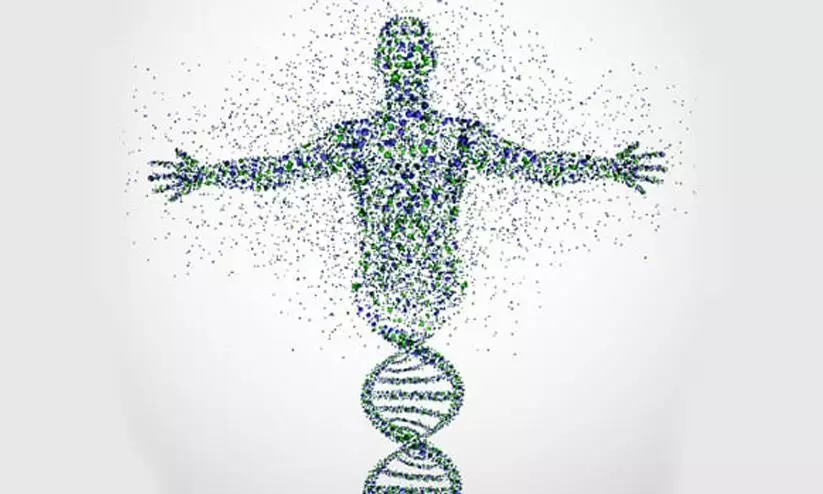

Biology The Major Concepts To Recall
text_fieldsDear students,
Have all of you started preparations for your public examination? Let’s have a look at the unit-wise important concepts in all eight units of Biology. These topics will help you score better. So let’s start your first revision.
All eight chapters in Biology are very important for public examination. The first unit “Sensations and Responses” deals with the nervous system. Stimulus, structure and function of neuron generation and transmission of impulses, different types of nerves, structure and function of and spinal cord, reflex actions sympathetic-parasympathetic system, and diseases affecting the nervous system are the main concepts in the first unit.
One of the sure questions in the Biology exam is “Redraw and label”. The structure of a Neuron and brain is usually associated with this question. The topic ‘Reflex action’ can be asked for the preparation of a flow chart. Various diseases affecting the nervous system is a topic usually asked for column re-arrangement. Specific terms like myelin sheath, neurotransmitter, synapse, etc. are important from the exam point of view.
The second unit “Windows of Knowledge” deals with the structure and functions of sense organs in human beings and various receptors in other organisms. The structure of the eye and sense of vision is a very important topic for the examination. Photoreceptors, eye defects and disorders are also the main topics from which the questions can be asked. For ‘Redraw and labelling’ structure of the eye is a prime topic. There is the possibility of a flow chart showing the pathway of sound impulses. Parts and functions of the inner ear are also important. Sense of taste and smell are topics usually included in making a flow chart. Questions having one score can be expected from the topic ‘various receptors of certain organisms’.
The third unit “Chemical messages for Homeostasis,” deals with the Endocrine system and various hormones associated with it. Lots of questions are asked from this unit, giving importance to the maintenance of glucose and calcium levels in the blood. The adrenal gland and its hormones, the role of the hypothalamus in maintaining homeostasis, and the action of vasopressin, plant hormones and pheromones are also important concepts that appear for examination. All illustrations given in this unit have a chance to appear as forms of questions.
The fourth unit keeping diseases describes pathogens. Different diseases and how the diseases are caused. They are also important. Topic related to malaria and tuberculosis, etc. The genetic disease included in the unit is Hemophilia. Hemophilia and sickle cell anaemia are the topics seen in the question paper. The topic ‘Plant diseases’ is also very important for one mark score. The ‘Effects of smoking’ is also one of the major topics of this chapter.
The fifth unit “Soldiers of Defense” gives a wide view of various defense mechanisms of our body, vaccines, merits and demerits of antibiotics, the basis of blood grouping and defense mechanisms in plants. The concept of ‘phagocytosis’ is one of the sure areas with different forms of questions.
Students have to identify different types of WBCs and their functions.
The use of modern diagnostic tools has to be recalled well. Scientific approaches to antibiotics tend to appear in question papers mostly.
The sixth unit “Unravelling Genetic Mysteries” deals with the various aspects of heredity and variation. Mendel’s hybridization experiments and assumptions got priority in question papers usually. Structure of DNA, Sex determination in humans, Gene action, etc. prevails importance in question paper. Nucleotides, Crossing over of chromosomes, and different types of RNA also demand priority on examination.
The seventh unit “Genetics for the Future”, explains various stages for the production of artificial insulin, the scope of genetic engineering etc. DNA fingerprinting is the portion from where questions are asked mostly. Genetic scissors and glue, Gene mapping, DNA profiling, Genome, Junk genes, and pharm animals. All are important terms regarding examination.
The last unit “The Paths Traversed by Life” deals with the origin of life on Earth and various theories associated with it. The concept of Chemical evolution theory is a more possible area for asking questions. The evidence of evolution and the evolutionary history of man are the other important areas in this chapter. Darwin’s theory of Natural selection mostly finds a place in question paper. The experiment setup created by Stanley Miller is important and have to find out the inference of this experiment. “Has man evolved from a monkey?” Yes, you all know the answer. Along with that, you have to familiarise the terms anthropoideae, cercopithecoideae and hominoideae.
Dear students, you have to cover all the figures, tables and illustrations in the textbook, because most of these will find a place in the question paper of the Biology examination.
Don't miss the exclusive news, Stay updated
Subscribe to our Newsletter
By subscribing you agree to our Terms & Conditions.





